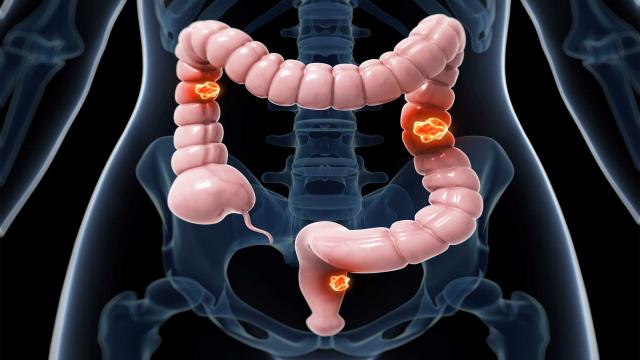
Turning up the Heat on Colorectal Cancer
Written By: Dr. Adam McLeod, ND, BSc (Hons)
Loco-regional hyperthermia is an advanced adjunctive cancer therapy which involves heating the tumour immediately after chemotherapy or radiation. Hyperthermia is characterized as the fourth pillar in treating cancer, including surgery, chemotherapy and radiation. This therapy is commonly used in hospitals and clinics across Europe and Asia but it is oddly not used regularly in North America. There are only a few advanced devices which actually have the capacity to significantly heat a tumour located deep within the body1,2. Recently there has been exciting research on a device called Celsius TCS and its use in colorectal cancer.
A recent clinical study in Greece investigated hyperthermia in patients with metastatic colorectal cancer when used in combination with chemotherapy1. In this clinical trial 32 patients diagnosed with colorectal cancer were divided into a control group who just received chemotherapy and the treatment group who received hyperthermia immediately following their chemotherapy infusion. When compared to the control group, the hyperthermia group showed a shrinkage of metastatic spots derived from colon cancer. This is in contrast to the control group which on average showed an increase of size during this time interval. The conclusion of the study was “the beneficial effects of hyperthermia are undeniable. The consolidation of the application of hyperthermia cancer treatment, is now a matter of time.”
I have personally observed the positive benefits of loco-regional hyperthermia many times in my practice with colorectal cancer. In some of these cases the cancer was progressing everywhere except for the specific masses that were being targeted by the hyperthermia. Upon shifting the treatment focus to a different metastasis, these new masses then started to also respond to the therapy as well. The heat that is applied to the tumour adds additional stress to the tumour cells when they are being treated with chemotherapy or radiation.
There are several naturopathic therapies which can be used to potentially help enhance the effectiveness of hyperthermia. Quercetin is a bioflavonoid that is safe to use in conjunction with some chemotherapies. This commonly used remedy is not safe with all chemotherapies and you must have professional guidance before using it. Quercetin has been shown to be a potent inhibitor of heat shock proteins. In other words, it inhibits the proteins that cancer cells use to resist the effects of the heat and thus makes colon cancer cells more vulnerable to hyperthermia3. There is also research to suggest that the diabetes medication metformin may be helpful to enhance the effects of hyperthermia by killing cancer stem cells4. These are just a few of many natural therapies which as starting to show promise as useful adjuncts to hyperthermia.
It is important to point out that hyperthermia is very different from an infrared sauna or the application of a heat pack. A loco-regional hyperthermia device is an advanced medical device that significantly heats the tissues surrounding a tumour2. You will not heat any tumour effectively without these advanced devices, especially if it is a deeper tumour. These are state of the art devices where the patient must be medically monitored during the procedure.
When looking at the evidence there is a clear and consistent trend. Localized hyperthermia has significant potential as an adjunctive cancer therapy. The application of heat using these advanced medical devices increases the effectiveness or chemotherapy and radiation. Hyperthermia reduces the risk of the cancer developing resistance to chemotherapy or radiation5,6,7. At the end of the day the goal is to use every tool at our disposal to increase the effectiveness of conventional therapies and destroy the cancerous cells. Hyperthermia is a potent adjunctive therapy that can help to accomplish that goal.
References:
1) Mandraveli, E., et al. “The action of hyperthermia in metastatic colorectal cancer in combination with chemotherapy.” Progress in Health Sciences 5.1 (2015): 69.
2) Noh, Jae Myoung, et al. “In vivo verification of regional hyperthermia in the liver.” Radiation oncology journal 32.4 (2014): 256-261.
3) Koishi, Mototsugu, et al. “Quercetin, an inhibitor of heat shock protein synthesis, inhibits the acquisition of thermotolerance in a human colon carcinoma cell line.” Japanese journal of cancer research 83.11 (1992): 1216-1222.
4) Lee, Hyemi, et al. “Response of breast cancer cells and cancer stem cells to metformin and hyperthermia alone or combined.” PLoS One 9.2 (2014): e87979.
5) Group, International Collaborative Hyperthermia, et al. “Radiotherapy with or without hyperthermia in the treatment of superficial localized breast cancer: Results from five randomized controlled trials.” International Journal of Radiation Oncology* Biology* Physics 35.4 (1996): 731-744.
6) Uckun, Fatih M., et al. “Radiation and heat sensitivity of human T-lineage acute lymphoblastic leukemia (ALL) and acute myeloblastic leukemia (AML) clones displaying multiple drug resistance (MDR).” International Journal of Radiation Oncology* Biology* Physics 23.1 (1992): 115-125.
7) Souslova, Tatiana, and Diana A. Averill-Bates. “Multidrug-resistant hela cells overexpressing MRP1 exhibit sensitivity to cell killing by hyperthermia: interactions with etoposide.” International Journal of Radiation Oncology* Biology* Physics 60.5 (2004): 1538-1551.






Leave a Reply
You must be logged in to post a comment.